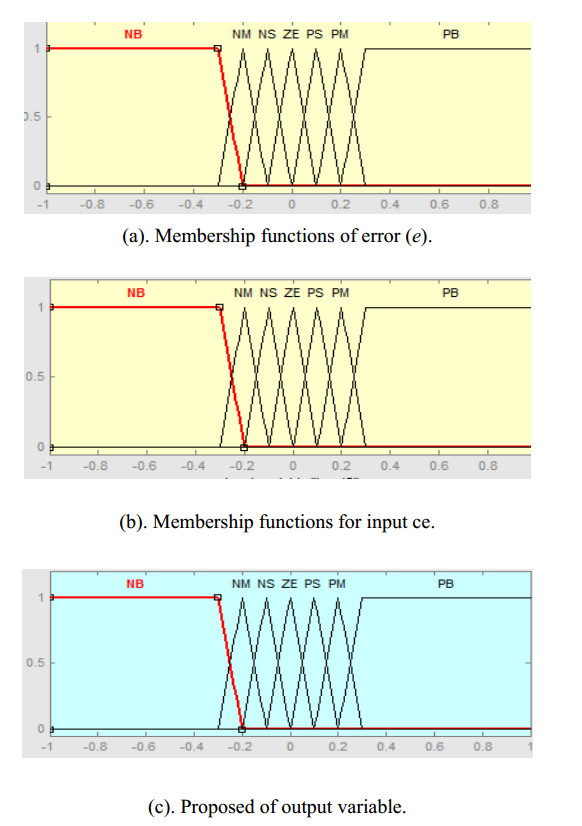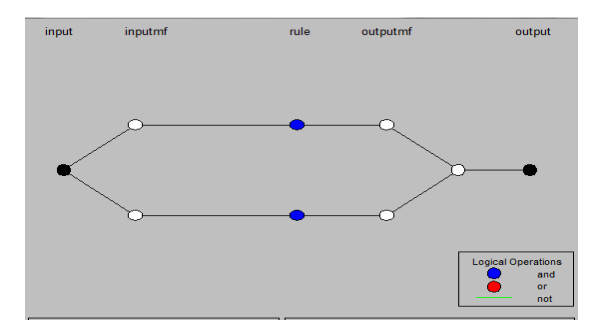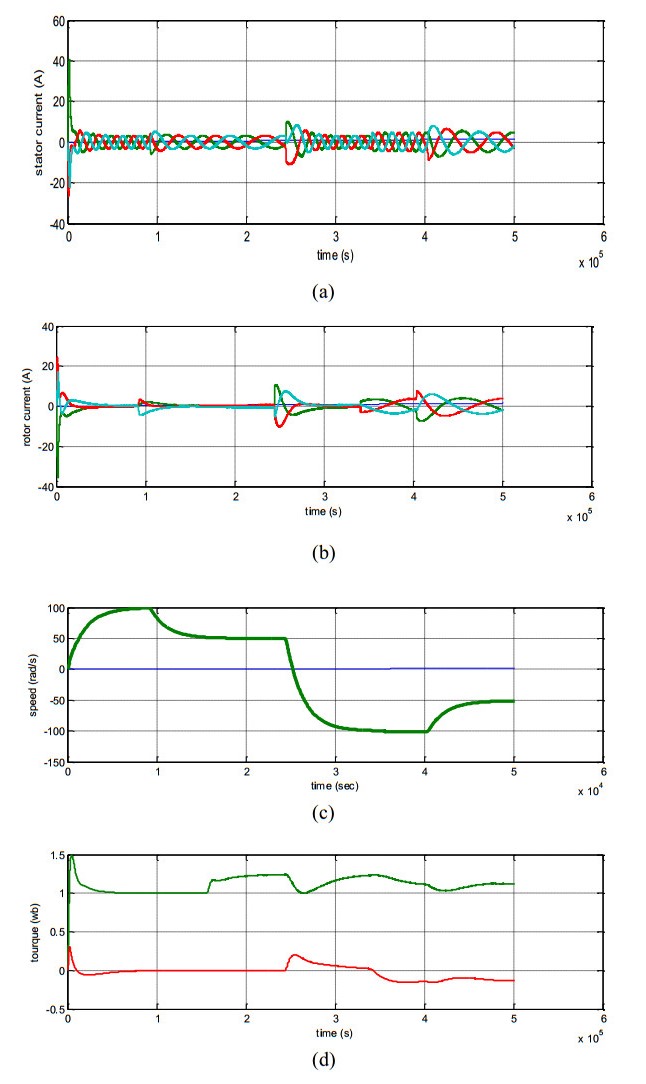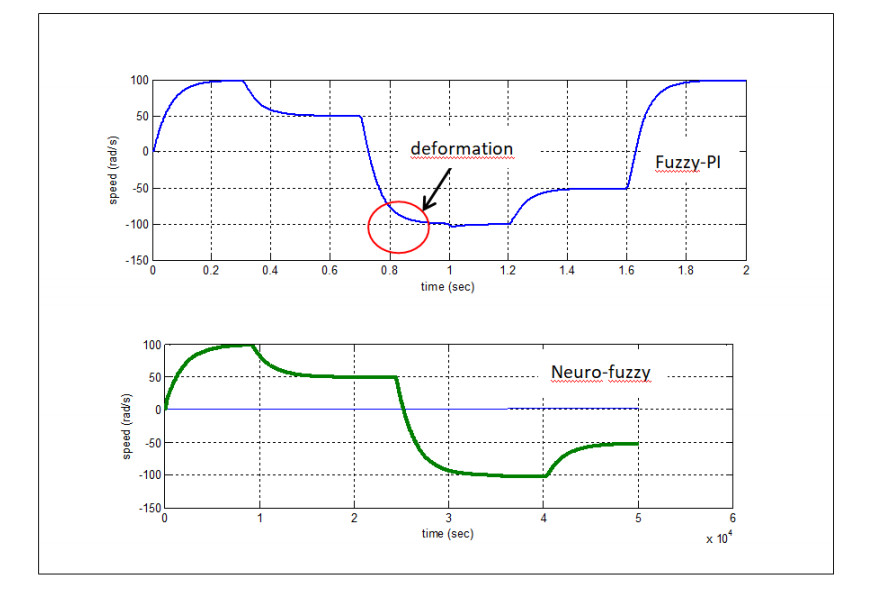The irrigation system in Foggara is adopted by peasants in the Algerian south. Over the years, the water level in the vertebrates has decreased, which has caused the migration of many peasants to their traditional agricultural lands. The studied system aims to strengthen the Foggara with deep wells that rely on large pumps, which are rotated by electric machines of high capacity. To ensure the maintenance of the water level, we control the speed of the DFIM machine and thus control the level of water flow. The controlled type of control is the control of the neuro-fuzzy, because it has many positive properties, for example, not associated with changes related to the electrical properties of the machine, such as resistance, self, etc.
1.
Introduction
The traditional agriculture depends on the irrigation of the Fogara. The latter is a group of wells connected to each other where the man in the past decade dug them manually for the purpose of bringing water from distant areas with a number of kilometers (within 5 kilometers) of their residence. During the summer, new wells are always being added to increase the water level or to maintain the old wells, but the depth of these wells remains limited because the drilling process is manual [1].
With the passage of time and the construction of deep wells along with the poverty of water shortage significantly, which affected the agriculture in the region, which left the farmers to their orchards and the search for jobs in another area, all of which led to the creation of unemployment among the rural population, although they were previously working In their orchards and had self-sufficiency of agricultural crops and other times sold [1,2].
To make sure the stability of the farmers in their orchards, it is necessary to provide sufficient water for watering and the same system that depends on the Foggara because it benefits all farmers and whatever their material income or agricultural crop. The important thing in all this is that the water level remains constant regardless of the consumption of water by the peasants. This requires constant supply and controlled water for poor people, for this purpose will be supported by deep wells with large water pumps, used pumps are rotated by large electric motors. In our study, we use synchronous double-feed Machine (DFIM). To maintain the water level, we must control the level of water flow to Fogara and thus control the speed of the engine that rotates the pump.
Therefore, in this research study, the artificial intelligence approach was applied by combining neural networks and foggy logic to develop a mysterious model of nerves in order to improve the accuracy of prediction in water flow changes and thus change in speed.
For many reasons, the generator (DFIM) shows many advantages, like the high-power application: traction, marine propulsion, wind energy conversion [1].
In addition, as an advantage, the DFIM machine can do power and control of stator or rotor by different structure.
As an example, the flow orientation strategy can transform the non-linear and coupled DFIM mathematical model into a linear model leading to an attractive solution as well as to generation or motorization operations [2,3].
In this work, a new type of controller has been built by combining the advantages of neural networks and fuzzy logic to control the speed of DFIM machine. We will present the simulations of this results in MATLAB.
2.
Model of DFIM
The electrical equations of DFIG in the Park frame [5,8]:
The equation of stator flux:
The equation of rotor flux:
The powers of the stator (active and reactive) are:
The powers of the rotor (active and reactive) are:
The electromagnetic torque is expressed as:
With P is the number of pair poles.
3.
Vector control with DFIM fuzzy regulator
Figure 1 shows the complete blur control blocks [7,8]:
The fuzzification portion converts the net values of the control inputs into fuzzy values that are defined by linguistic variables by progressively varying the membership function.
Fuzzy sets of shapes can be triangular, trapezoidal, etc. [6,9].
According to the application and the processing power, the defuzzification method is installed. This installation can do this by methods whose center of gravity or by methods of height are common [6].
a. Fuzzy-PI controller
The fuzzy controller is usually non-linear, maybe written as follows [7,12]:
The Fuzzy-PI output is:
where ke is the gain of the speed error, kce is the gain of the change of speed error kp is the proportional factor; ki is the integral factor, e is the speed error, ce is the change of speed error,
u is the fuzzy output.
To control DFIM with strategy Fuzzy and PI, Figure 2 present this method:
After that, the membership functions of error (e) and his change are presented in Figure 3a and Figure 3b. The Figure 3c is the proposed membership functions of output value. The inference strategy used in this system is the Mamdani algorithm.
This work, used the triangular membership function, the max-min reasoning method, and the center of gravity defuzzification method, as those methods are most frequently used in many works of literature [6,11].
b. Neuro-fuzzy controller
The ANFIS abbreviation is: Adaptive Neuron-Fuzzy Inference System. It works with input and output data values, the ANFIS function draws a Fuzzy inference system, whose membership function parameters are adjusted.
This adjustment from the data they model introduce to fuzzy systems to learn. ANFIS is very complex as fuzzy inference systems and is not available for all fuzzy inference system options. Simply ANFIS only supports Sugeno type systems, which must have the following properties [8,13]:
● Be the zero order type Sugeno systems.
● A single output is required using the weighted average defuzzification.
● Do not share rules. Different rules can not share the same output membership function, that is, the number of output membership functions must be equal to the number of rules.
● Have a unit weight for each rule.
To start ANFISGUI, type the following command at the MATLAB prompt: Anfisedit.
The ANFIS editor's graphical window includes four separate areas to support a typical workflow. The graphical interface allows you to perform the following tasks:
● Loading, tracing and erasing data.
● Generation or loading of the initial structure of the SIF.
● Train the FIS.
● Validate the trained FIS.
To generate the FIS structure, we used 2 membership functions, with the I/p parameters as gbellmf and the o/p type as linear.
We use a hybrid learning algorithm to form the generated FIS.
Figure 4 shows the generated ANFIS structure used for the design of the cruise control.
4.
Results and discussion
The DFIM used in this work is a 2.25 kW, whose nominal parameters are reported in appendix.
Speed reversal of (157, -157 rad/s), with a load of 5 N.m applied at t = 1 s.
The responses of current stator and rotor, electrical torque speed and stator flux and rotor flux are shown in Figure 5. The Fuzzy-PI regulator shows the good performances to achieve tracking of the desired trajectory.
At these changes of loads, the Fuzzy-PI regulator rejects the load disturbance very rapidly with no overshoot and with a negligible static error as can be seen in the response of speed (see Figure 5d). The decoupling of torque-flux is maintained in permanent mode.
The Fuzzy PI controller based drive system can handle the sudden change in load torque without overshoot, undershoot, and steady state error.
The Figure 6 presents simulation results of direct vector control by a neuro-fuzzy speed controller. We notice an improvement in the overall performance of the system with the introduction of the neuro-fuzzy regulator compared to the fuzzy-PI. When starting and reversing the direction of rotation, the speed reaches its value with a zero overshoot. A good rejection of the disturbance due to the application of the load. This type of regulator ensures decoupling. The current is well maintained at its allowable value, and the flow has a fast dynamic to reach its reference value.
Step change in load torque at t = 0.1 ms and speed reversal stage at t = 0.25 ms for Neuro fuzzy controller and the Fuzzy PI controller from which it can be see that the speed reached the rated value in very short period for the Neuro Fuzzy controller.
5.
Conclusions
This paper proposes a neuron-fuzzy controller for the speed control of a double feed induction machine with direct control of the orientation of the stator flow. To have a good efficiency we tested on the machine DFIM the controller blurred under operating conditions. The fuzzy neural regulator exhibits good resistance to insensitivity to load torque disturbances as well as faster dynamics with negligible stationary state error under all dynamic operating conditions.
The simulation results exhibited correct stator flow control behavior and speed tracking performance. The Neuron-Fuzzy controller-based speed controller system for DFIM has been successfully developed in MATLAB. The performance of the system has been compared to that of the Fuzzy-PI controller.
Conflict of interest
I declare with honor that there is no conflict of interest with respect to my manuscript.
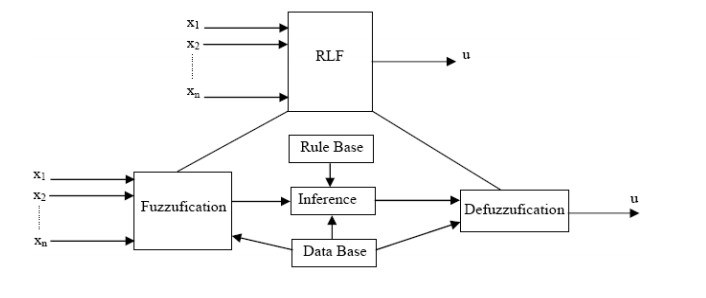









 DownLoad:
DownLoad:

